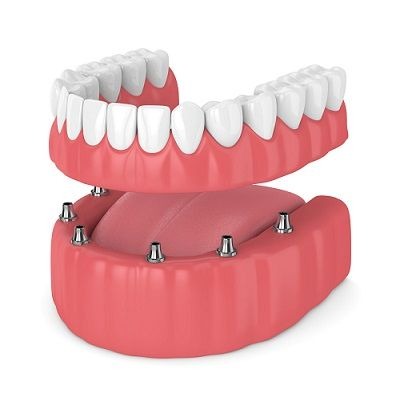The integration of technology in dentistry has revolutionized the way procedures are performed, particularly in the field of dental implants. At the Best Dental Implants Clinic Dubai, we harness cutting-edge technology to enhance the effectiveness, safety, and comfort of dental implant procedures. This article explores the significant role technology plays in improving dental implant treatments, providing patients with more predictable outcomes and streamlined experiences.
Advancements in Imaging Technology:
One of the most critical aspects of successful dental implant placement is accurate diagnosis and planning. Advanced imaging technologies, such as cone beam computed tomography (CBCT), allow dentists to capture detailed 3D images of a patient’s oral and maxillofacial structures. This comprehensive view aids in precise implant placement by providing critical information about bone density, anatomy, and potential obstacles such as nerves and sinuses.
Benefits of 3D Imaging:
Enhanced Accuracy: 3D imaging improves the accuracy of implant placement, reducing the risk of complications and ensuring better aesthetic outcomes.
Customized Treatment Plans: With detailed imaging, dentists can create tailored treatment plans that suit each patient’s unique anatomy.
Patient Education: High-quality imaging can help educate patients about their dental condition and the planned procedures, enhancing their understanding and comfort.
Computer-Guided Implant Surgery:
Computer-guided surgery has emerged as a game-changer in dental implant procedures. Utilizing digital imaging data, dentists can create precise surgical guides that dictate the exact positioning of the implants during surgery. This technology ensures that implants are placed at the optimal angle and depth, enhancing their stability and integration with the jawbone.
Advantages of Computer-Guided Surgery:
Minimally Invasive: Computer-guided surgery often requires smaller incisions and less tissue manipulation, leading to faster recovery times and reduced post-operative discomfort.
Increased Predictability: The precision of guided surgery increases the likelihood of successful implant integration, providing patients with greater peace of mind.
Streamlined Workflow: The use of digital planning reduces the time spent in the surgical chair, allowing for more efficient appointments.
Laser Technology in Implant Procedures:
The use of laser technology in dental implant procedures has transformed how dentists perform soft and hard tissue surgeries. Lasers offer a minimally invasive alternative to traditional surgical methods, providing numerous benefits to both patients and practitioners.
Benefits of Laser Technology:
Reduced Bleeding: Lasers minimize bleeding during procedures by sealing blood vessels as they cut, leading to a cleaner surgical site and improved healing.
Less Discomfort: Patients often experience less post-operative pain and swelling due to the precision of laser application, enhancing their overall comfort during recovery.
Faster Healing: Laser-assisted procedures can promote faster healing due to reduced trauma to surrounding tissues.
3D Printing in Dental Implants:
3D printing technology is becoming increasingly popular in dental clinics for creating custom implant components and surgical guides. This innovation allows for the rapid production of highly accurate models tailored to the patient’s specific anatomy.
Advantages of 3D Printing:
Customization: 3D printing enables the production of customized implant abutments and crowns, ensuring a perfect fit and optimal aesthetics.
Speed: The ability to produce components in-house means that patients can receive their implants more quickly, reducing wait times for restorations.
Cost-Effectiveness: 3D printing can reduce costs associated with outsourcing components, potentially lowering the overall expense for patients.
Digital Workflow Integration:
The integration of digital workflows in dental implant procedures enhances communication between dental professionals and patients. Digital platforms allow for seamless information sharing, ensuring that all team members are aligned throughout the treatment process.
Benefits of Digital Workflows:
Streamlined Communication: Digital platforms facilitate real-time communication between specialists, including surgeons and restorative dentists, improving treatment coordination.
Patient Engagement: Patients can access their treatment plans, progress, and educational materials through digital portals, empowering them to be active participants in their care.
Data Management: Digital workflows allow for better management of patient records and treatment histories, improving the overall efficiency of the clinic.
Innovations in Implant Materials:
Technological advancements have also led to the development of innovative materials used in dental implants. These materials are designed to enhance the longevity and biocompatibility of implants, ensuring successful integration with the jawbone.
Key Innovations:
Zirconia Implants: These all-ceramic implants offer excellent aesthetics, making them ideal for patients concerned about the appearance of metal in their mouths. They are also highly biocompatible, reducing the risk of allergic reactions.
Titanium Alloys: New titanium alloys have been developed to improve strength and durability while maintaining biocompatibility. These alloys can withstand greater forces, making them suitable for various clinical situations.
Enhanced Patient Comfort and Experience:
Technology plays a crucial role in improving patient comfort during dental implant procedures. Innovative sedation techniques and digital anxiety management tools help reduce fear and discomfort, making the experience more pleasant.
Sedation Options:
Nitrous Oxide: Commonly known as “laughing gas,” nitrous oxide provides a calming effect and is easily adjustable during the procedure.
Oral Sedation: For patients with higher levels of anxiety, oral sedation can help induce a relaxed state without the need for intravenous methods.
Digital Anxiolysis:
Digital tools, such as virtual reality and guided meditation applications, can help distract patients during procedures, reducing anxiety and discomfort. These innovations contribute to a more positive experience at the Best Dental Implants Clinic in Dubai.
Conclusion:
The role of technology in enhancing dental implant procedures is undeniable. From advanced imaging techniques to innovative materials, technology is transforming how dental implants are placed, resulting in improved outcomes and patient satisfaction. At the Best Dental Implants Clinic in Dubai, we are dedicated to staying at the forefront of these advancements, ensuring our patients receive the highest quality care in a comfortable and efficient environment. If you are considering dental implants, we invite you to schedule a consultation and discover how our advanced technologies can help you achieve a beautiful, functional smile.





Comments